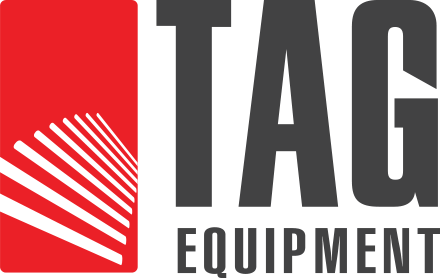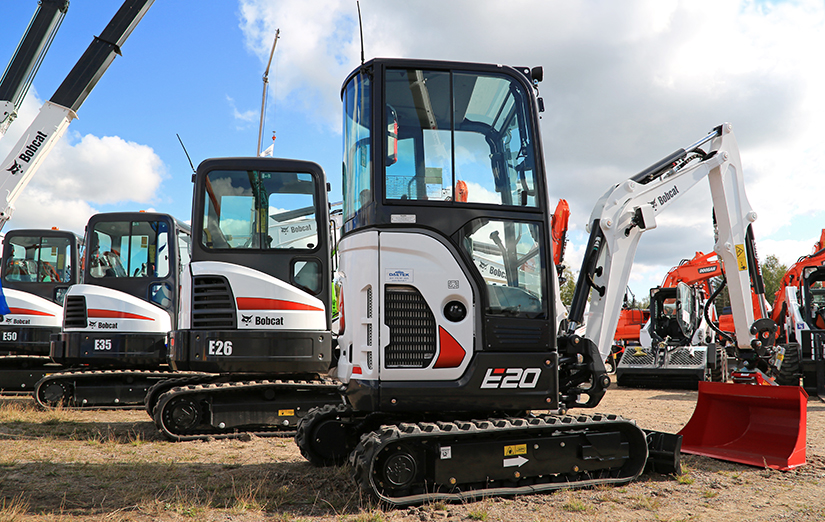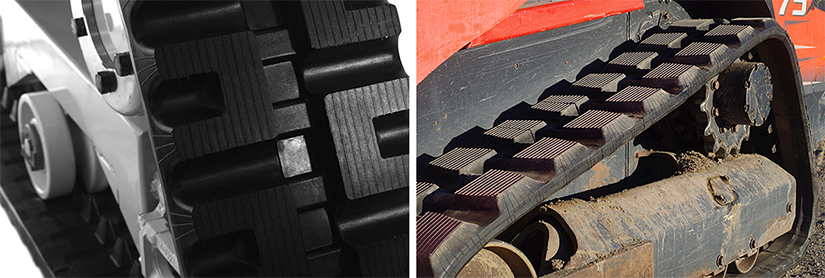Bobcat machines offer many benefits to operators and industries. These include exceptional versatility, compact design for maneuverability in tight spaces, robust construction for durability, and compatibility with various attachments that enhance functionality. Their efficiency in excavation, landscaping, construction, and material handling significantly increases productivity. Additionally, their reputation for reliability and ease of maintenance ensures minimal downtime, making them a valuable asset across various applications.
However, Bobcat owners often require expert guidance to optimize their equipment with high-quality tracks and attachments. Read on to understand the essential terminology, guidance systems, operational best practices, and types of track damage so you can make informed decisions.
Bobcat Tracks Terminology
Before diving into the specifics, it is beneficial to learn the fundamentals. Familiarizing yourself with these terms will help you to make the right choice for your equipment’s undercarriage.
Embed
The embed in Bobcat rubber tracks is the linchpin that holds them together. Here, you will find components like steel cords and rubber compounds meticulously bonded together. This composite structure helps to endure the rigours of demanding terrains, providing the tracks with strength, durability, and resistance to wear and tear. The embed’s quality and construction directly impact your machine’s longevity and performance, making it a critical factor to consider when selecting tracks for your equipment.
Pitch
Pitch is the fundamental measurement that defines the spacing between the tread lugs on the rubber tracks.
- A longer pitch signifies wider spacing, enhancing traction but potentially affecting ride smoothness.
- Contrarily, shorter pitch tracks have narrower spacing, resulting in a smoother ride but may compromise traction in some conditions.
Sprocket
Sprocket drives the tracks by engaging with the drive lugs on them. A well-maintained and adequately aligned sprocket ensures effective power transmission from the engine to the tracks, facilitating precise maneuverability and minimizing undue stress on the undercarriage.
Long Pitch Track and Short Pitch Track
They represent a choice between stability and agility in your Bobcat’s performance.
- Long-pitch tracks have wider spacing between lugs, similar to off-road tires on a 4×4 vehicle. They offer superior traction, making them suitable for challenging terrains. However, they may sacrifice some smoothness in the ride.
- Conversely, short-pitch tracks provide a smoother ride, making them ideal for applications where comfort is paramount. However, their narrower lug spacing may reduce traction in extreme conditions.
Tread Pattern
Tread patterns come in various designs, each tailored to specific tasks and environments. Some are optimized for digging and excavation, providing aggressive grip in loose soils. Others are designed for stability on hard surfaces, ensuring a smoother ride and reduced wear. Your choice of tread pattern should align with the tasks your Bobcat will perform, as it significantly influences your equipment’s overall performance.
Idler and Roller
These parts of a Bobcat are vital in maintaining proper track tension, alignment, and contact with the terrain. Properly maintained idlers and rollers ensure your machine glides effortlessly over different surfaces while minimizing track wear. Regular inspection and upkeep of these components are essential for optimal performance and longevity.
Guide Systems
Guide Systems refer to the mechanisms that steer and maintain the proper alignment of the rubber tracks. They are crucial in distributing weight, optimizing traction, minimizing wear and tear, and ensuring smooth and efficient operation. Choosing the right guide system can enhance your Bobcat tracks’ overall performance and longevity, leading to improved productivity and reduced maintenance costs.
Steel vs. Undercarriage Guidance Systems
When it comes to Bobcat rubber tracks, you have two primary options for guidance systems: steel and undercarriage.
- Steel guidance systems employ steel links and sprockets.
- Undercarriage systems rely on a combination of wheels and idlers to guide the tracks.
Conventional-Style Rubber Track Guidance Systems
Conventional-style guidance systems are simple yet highly effective. They consist of a series of wheels and idlers that expertly guide the track around the undercarriage. These systems are known for their durability and suitability for various applications.
Interchangeable-Style Rubber Track Guidance Systems
This track guidance system offers unparalleled versatility and ease of maintenance. It allows swift track replacement without specialized tools, making it an excellent choice if you require adaptability.
Handling and Operation Do’s and Don’ts for Bobcat Owners
Proper handling and operation are essential for maximizing the lifespan of your machine’s rubber tracks. Here are some tips to ensure longevity and optimal performance:
Do’s
- Regularly inspect your tracks for signs of wear and damage.
- Follow the manufacturer’s guidelines to maintain proper track tension.
- Keep the rubber tracks and undercarriage clean to prevent debris buildup.
- Lubricate moving parts to reduce wear and friction.
- Adhere to recommended maintenance schedules.
Don’ts
- Avoid overloading your Bobcat with attachments that exceed its capacity.
- Do not operate on rough terrain without appropriate track protection.
- Never disregard unusual noises or vibrations during operation.
- Don’t neglect routine maintenance and inspections.
Types of Rubber Track Damage During Operation
Understanding the various types of damage that your rubber tracks can endure is crucial for timely maintenance and repair. Here are common forms of track damage that you should look out for:
- Severed Steel Cords: This can compromise the structural integrity of the rubber track, leading to diminished performance and potential safety hazards.
- Abrasion of Embedded Metal Pieces: Abrasive materials wear down the rubber, ultimately reducing the overall lifespan of the track.
- Expulsion of Embed Due to External Forces: External forces, such as impacts or debris, can lead to the removal of track embeds, negatively affecting track performance.
- Separation of Embeds Due to Corrosion: Corrosion can weaken the bond between the track and the embeds, potentially causing detachment and safety concerns.
- Cut on the Lug Side of the Rubber: This can significantly impact traction and should be promptly addressed to avoid further damage.
Also Read: EVERYTHING YOU SHOULD KNOW ABOUT RUBBER TRACK DAMAGE
Get Quality Bobcat Tracks and Attachments at Tag Equipment
At Tag Equipment, we recognize the importance of reliable rubber tracks and Bobcat attachments for your equipment. Our commitment to quality and excellence ensures access to a diverse range of high-quality products designed to meet the multifaceted needs of Bobcat owners in Canada. Explore our extensive selection of Bobcat tracks, forks, buckets, and other attachments for sale.
Call us at 416-716-5850 to learn more about our tracks or attachments. You could also fill out our online form if you have any questions. We can help enhance your equipment’s performance, durability, and versatility with the best products.


